a number of firsts
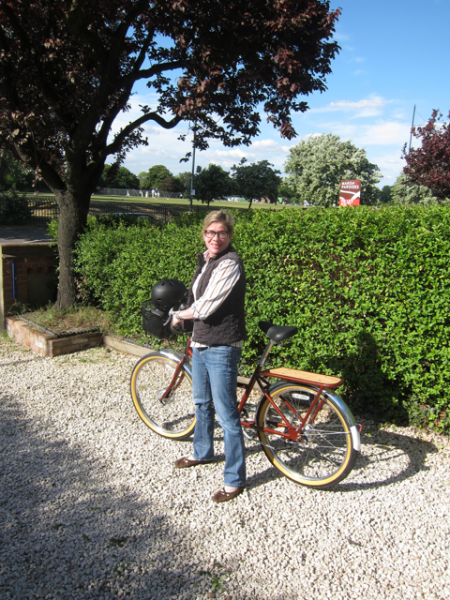
 It’s true, what they say about riding a bike! I finally bit the bullet last week and jumped on my new bike for my first forays into London traffic.
It’s true, what they say about riding a bike! I finally bit the bullet last week and jumped on my new bike for my first forays into London traffic.
We’re living JUST that too far away from the places we want to be to rely on walking everywhere, so it was but the work of a moment to pop into a Chiswick cycle shop and get… a cycle. That’s what they call it in England, “cycling,” and one “cycles” rather than “rides one’s bike.” And I’ve discovered a flaw in my personality that I never focused on until now. I DAYDREAM.
Daydreaming is a necessary skill when one lives in an urban environment and spends a lot of time on public transport, or in the passenger seat of a car. I can’t read in the car because I get carsick, and sometimes even the closest of husbands and wives simply can’t chat ANOTHER MINUTE. So my mind wanders to possible blog post topics, grocery lists, a new way to crisp chicken skin.
When on a bicycle, however, there can be no such lapses! I find myself several hundred yards from the last place I remember paying attention, and I’ve no idea what’s happened in the interim. And since, as Avery points out to me, the bicycle is not a horse and therefore can’t make judgments about safety, I could easily cause myself grievous bodily harm, not to mention to innocent pedestrians. No more grocery lists while cycling.
Last week I had a lunch date with my chum Antonella on the other side of the river, to deliver our verdict on the new posh fish and chip joint — we’re the first of all our friends to go! — in Shepherds Bush, Kerbisher and Malt. So I hopped on my bike, strapped on my helmet, firmly banished ALL non-transport-related thoughts from my mind, and pedaled off. Thinking of nothing, I promise you, but pedaling.
The verdict? Very fresh high-quality haddock, a choice of battered, grilled or with Matzoh crumbs. Terrible limp chips, but it was only their second day in business so one hopes that will improve. Nice light lemon mayonnaise and really shockingly delicious, unrubbery baby calamari. Not “crispy” as advertised, but again, that could improve. The fish was nicely crunchy, so obviously they know how.
Now, Antonella is Italian and not at all shy about expressing herself, which makes her the ideal companion for any sort of lark, including complaining about our perfect families. “Last night I made a chilli con carne for my children, when I could have simply given them something ready-made. But no, we cook fresh food for our children. And all they do was to complain that I had used the wrong sort of beans, and had probably not made enough rice! Aggh!” This last with a perfect Italian derisive snort. I had to counter with a tale of my own, from last week when I spent the evening receiving swimmers at Avery’s school pool. (One must do this once a term in order to have the privilege of using the pool.)
Now, a less vigilant, not to say obsessive food-providing parent might just tell her family to order a pizza. But no. I set a boneless chicken marinating in lemon, garlic, rosemary and olive oil for John to pop in the oven. I made asparagus soup with homemade chicken stock. I steamed tiny artichokes and made a dressing for them. And, piece de resistance, I set out some Marks & Spencer potato rosti to be baked.
“Ugh, there is a vein in my chicken,” Avery said immediately, “look. Right there.” “Well, it WAS a living thing, so some evidence of that is only to be expected,” I returned, whereupon John jumped onto the bandwagon saying he thought the soup was a little “stocky,” as in tasting too strongly of stock, and that while he was at it, he’d like me to know the artichokes were slightly… tired.
In short, the only acceptable part of the meal was the M&S potatoes. From a plastic bag. In the freezer section. “You said you want feedback!” they moan in self-pity. “Not that much,” I growl.
Antonella understood perfectly. “This after we have slaved to provide them with home-cooked food. I tell them sometime I will simply slap them up the side of their heads, Italian-style. They will not be expecting it.”
(The artichokes WERE a little tired, to be honest.)
From lunch we repaired to her gorgeous, serene house — she has an Aga! — for me to try on the jumpers she is knitting for me! Another first: I have never had a piece of clothing made for me, just me. We actually went together to choose the wool, and looked through pattern books and Antonella’s own collection of jumpers, for me to choose what style, what sleeve length, how wide the cables would be, whether the waist should nip in a bit. To me, being able to knit a jumper from scratch is akin to being able to fly a plane or perform an appendectomy. I just can’t imagine. It will be magical.
On Friday night I felt I owed it to us to produce decent artichokes, and since then I have heard from several foodie friends that they have never prepared one. So I shall tell you how, because they are so good, and so good for you: anti-toxins, so you can have a Scotch with them and it cancels everything out.
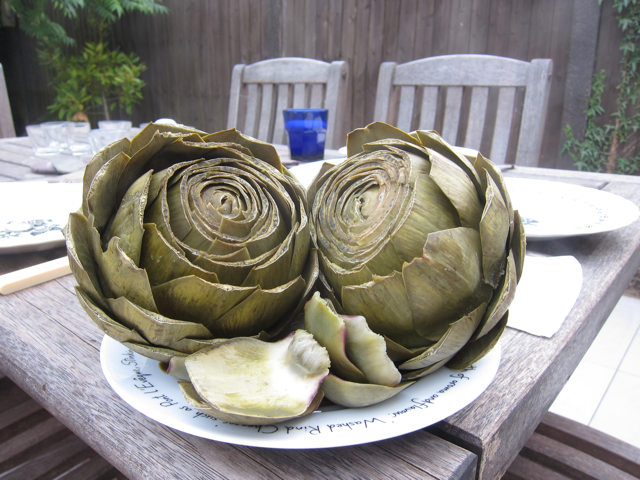
With a serrated knife (it’s faster), cut off the top of each artichoke about an inch down. Cut off the stem to leave about an inch. Pull off the lowest dry leaves and discard, stopping when you get to nice, fresh, tight leaves. With scissors, snip off the top 1/2 inch or so of every single leaf. Place artichokes stem-down in a saucepan in which they will fit tightly so they don’t roll around, and for which you have a lid. Pour water into the bottom of the saucepan and steam the artichokes for about 35 minutes or until leaves pull out easily. Check the pan frequently as I don’t think I have EVER steamed artichokes without burning the pan dry at least once. It can be hard to clean.
When the artichokes are cooked and can be handled, serve them with a bowl for the discarded leaves, and with either melted butter or a mustardy vinaigrette. To eat them, pull off each leaf, dip into whatever, and scrape the meat off with your teeth, just at the end where the leaf was attached. When you run out of leaves, you’ll be down to the “choke,” a thistly nasty thing at the center of the artichoke. Cut this off with a knife and you’re left with the meaty heart. which is heavenly dipped into the butter or dressing and eaten luxuriously.
****************
And on Saturday, another first! My maiden voyage into bell-ringing, which is not to say “campanology” yet because what I actually did was too basic to implied I was studying anything.
I arrived at our local church. My heart pounding a bit, I walked in at the hour appointed for “learners,“ to find my teacher Arnold ready for me. A reticent, dignified gentleman about 6’4”, he took me on a tour of the clock room (where the clock reposes, not surprisingly) and the bell-chamber, and showed me how to “mute my clapper,” a skill I’m sure John wishes HE had for me, at times. All it requires is a bit of inner tube, tied around the bell’s tongue to hold it in place.
The reason you mute a bell clapper for learners is to protect the neighbors from the clanging, repetitive, annoying sounds a bell would make as I pulled endlessly over and over! Just think: these bells are over 500 years old. Parts of the church are that old as well, but other parts were burned by an arsonist in the 1990s and have been restored. There are still black streaks in the ancient winding stone staircase, where the flames licked. “This stairwell was like a chimney,” Arnold explained.
I will have to learn in such tiny, tiny increments. The rope, for example, has two important parts: the lower bit, the tail, which you pull to bring the bell from where it’s resting to the up position, and then the middle bit, the sally, which you pull to bring the bell back down. Or something like that. And for the whole of my first lesson, I never even got to touch the sally. Arnold pulled the sally, since the beginning can handle only the tail to start with. A whole hour of just pulling the tail! That’s called the “back stroke” and it is much harder than it looks, with about a hundred instructions to remember for each go at pulling.
It may be several weeks before I’m allowed to touch the sally.
It’s a bit daunting, and a bit discouraging to be honest. But as Lord Peter Wimsey would say, “Faint heart never won so much as a bowl of cabbages,” so I shall persevere. Look at my book.
And someday, just think: these pages will make sense to me.
After my hour’s practice, during which Arnold told me several times to stop frowning, to relax and not to pull so hard, the real ringers turned up and could not have been more friendly. There are two 12-year-old girls! One was assigned to stand with me for a bit and “explain anything that needs explaining,” which she did with impossible poise. There is a special brand of supportiveness among bellringers, I find, different from the attitude of any other people I’ve ever met. John puts it down to the natural inclination of people with crazy, weirdo enthusiasms to stick together.
Then it was home to prepare for another first: our first dinner party in the new house! Oh, we’ve had the odd sleepover girl to be fed, but this was a real party with several courses and new friends, our lovely next-door neighbors James and Susan. He is a massively enthusiastic gardener, which I could tell by hearing his rake and clippers over the fence as the weeks have gone by, but then, too, these appeared last week over the fence.

And when they arrived, they were bearing not only the usual gifts of champagne and a bouquet of flowers, but the best gift of all: a container of James’s “just-picked at half past six” ROCKET!
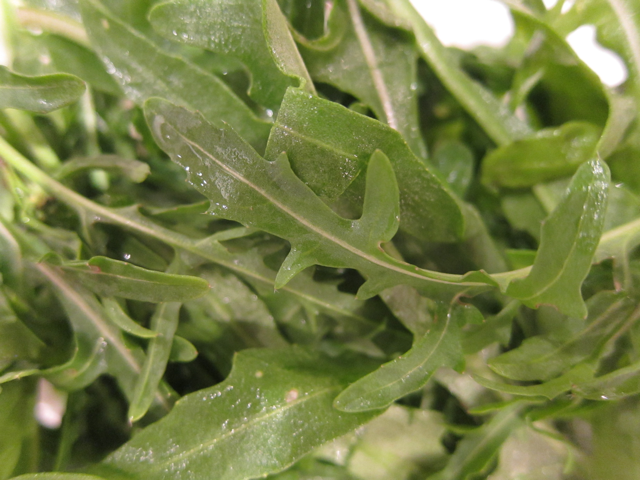
Well! You know how I am about rocket. How on earth did James guess? He couldn’t stop smiling with generous happiness at my glee. So peppery, so crunchy, simply puts supermarket rocket to shame. Gorgeous.
John grilled an enormous pile of lamb chops, marinated in rosemary and garlic, and I gave them Avery’s specially-requested risotto with spring beans, inspired by her long-ago cookery course at Jamie Oliver’s. Just look how pretty the greens were.
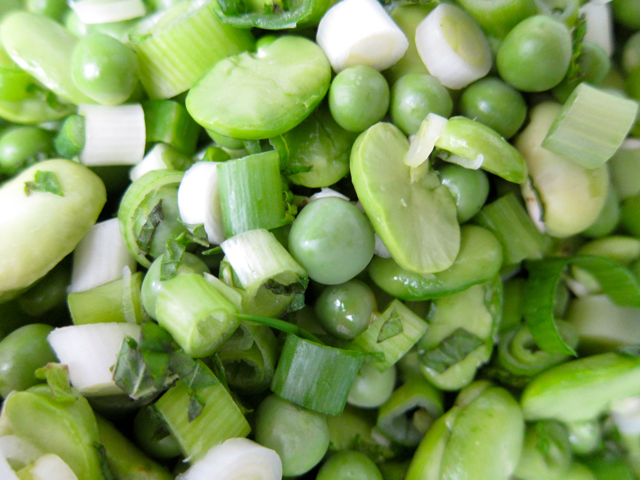
We had a lovely time. James and Susan are the easiest possible conversationalists, full of anecdotes about their six grown children and several grandchildren, and advice about living “on the right side of the river,” with some neighborhood gossip thrown in, and a flattering, if bemused interest in my bellringing.
Avery and her two friends deigned to appear in time to eat, and the risotto did go down a treat.
Risotto with Broad Beans, Peas and Mint
(serves 8 with leftovers)
3 tbsps butter
6 cloves garlic, minced
2 small shallots, minced
600 grams/20 ounces arborio rice
950ml/4 cups chicken stock (approximately)
2 cups broad beans, shucked
1 cup little green peas
1 bunch spring onions
handful fresh mint
handful fresh grated Parmesan
fresh black pepper and sea salt to taste
dash cream, if desired
Melt the butter in a heavy saucepan which has a lid. Saute the garlic and shallots briefly, then add the rice and stir to make sure all the grains are coated with butter. Add stock to cover the rice and stir, watching the liquid become absorbed by the rice. Continue to add stock, stirring all the while, until the rice is al dente, that is until it yield gently to the teeth but is not yet too soft. Add the beans, peas, spring onions and mint and stir thoroughly, heating the vegetables through. Add the cheese and season to taste. Add the cream if you like, and serve hot.
*********************
Very popular! While everything cooked, James took John on a horticultural tour of our lovely garden, showing off its delights we would never have noticed on our own. “This is possibly the largest bay tree in Great Britain,” he explained, “and while it’s not in your garden, its leaves are, so help yourself!”

And a black cherry tree! “I hope you’ll get some before the mourning doves do…”

And fresh thyme! Several sprigs of it have gone into our chicken casserole this evening.
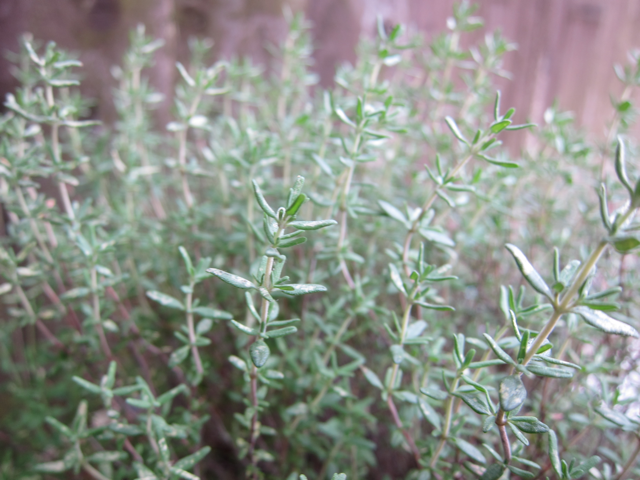
A lovely evening. It felt so good to be sitting around the candlelit table, welcoming new friends. I knew it would happen, but I didn’t know how happy it would make me. I sat up late into the night after the sleepover girls had finally succumbed, and thought about friendship and the funny, lovely forms it takes. Handfuls of fresh rocket.
And finally, my first experiments with what I think will be an absolute staple in our house: arancini! Fried balls of leftover risotto, if you please.
Arancini
(1 ball per person)
Take your leftover risotto from the fridge about an hour before you want to eat, and spread it in a layer on a cookie sheet or baking dish. The idea is to take the chill off so that the fried ball will not be cold on the inside, nor will you have to burn the crumbs in order to get the inner bites warm.
Place Japanese panko breadcrumbs in a shallow dish.
Heat whatever quantity of tasteless oil you feel comfortable with in a utensil you like. Since I wasn’t sure how my Aga would like getting oil to frying temperature, I took John’s advice and used a small saucepan so as not to tax the heating capabilities of my precious stove. My saucepan could accommodate one arancino at a time, which is fine because then each one can rest on paper towel until they are all fried.
Now with clean hands, roll a good portion of risotto into a ball about the size of lime, or if you’re feeling as if you’d like them more fork than finger food, a lemon. Roll in breadcrumbs till completely coated. When a pinch of breadcrumbs in the oil fries instantly, the oil is ready. Carefully place each ball in the hot oil and let cook until brown, turning frequently. The idea is to get the inside warmed through — of course you can’t tell, but you can imagine — without over-browning the outside. When you are happy with the coloration of your arancino, take it out and place it gently on a few folded paper towels.
Repeat this process with all your risotto. Then TUCK IN.
These little babies are heavenly! Creamy and savoury inside, with lovely crisp peas and broad beans, and crunchy on the outside so that biting into them is a taste and texture sensation.
Since telling some friends about these contradictory delights — so rich and yet they’re just leftovers! — I have heard some interesting things. Arancini are the Southern Italian word for them, where in Rome they are called suppli. And my friends Mary and Rebecca tell me what when you tuck a piece of mozzarella or fontina inside them, they are called suppli al telefono, because the melted cheese stretches like a telephone wire! And then you can serve them in a pool of garlicky, tomato sauce and you have basically re-invented the wheel.
Now I’m going to rest on my laurels. For the foreseeable future, I’m not going to do any new things. I’m just going to empty my mind, take a deep breath, and pedal off some of that rice.


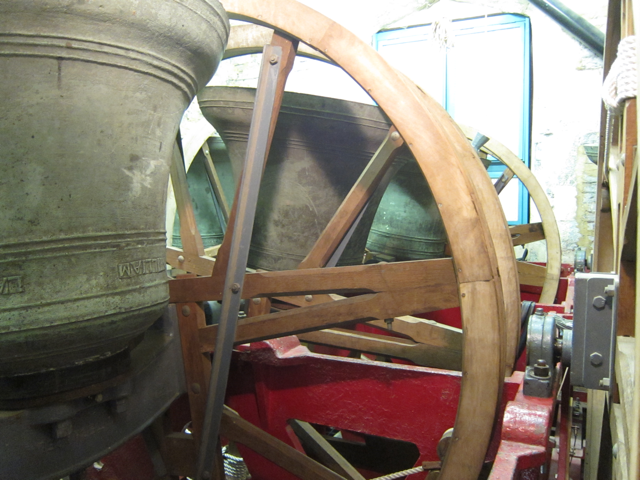
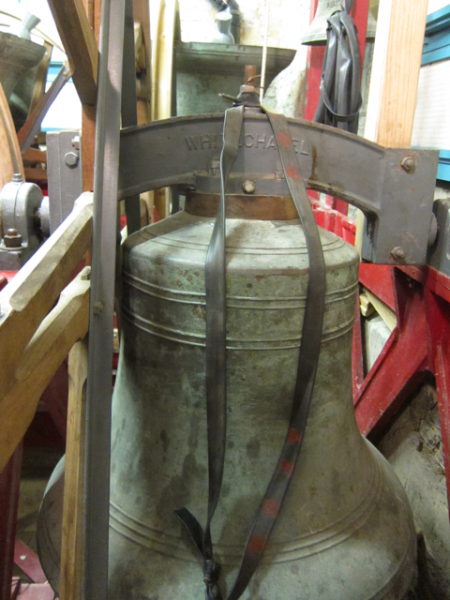
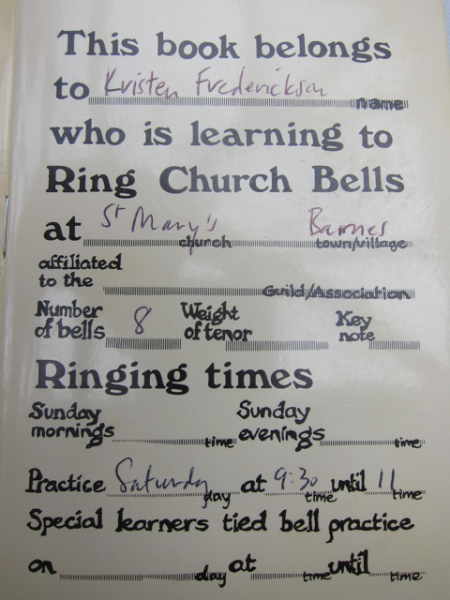
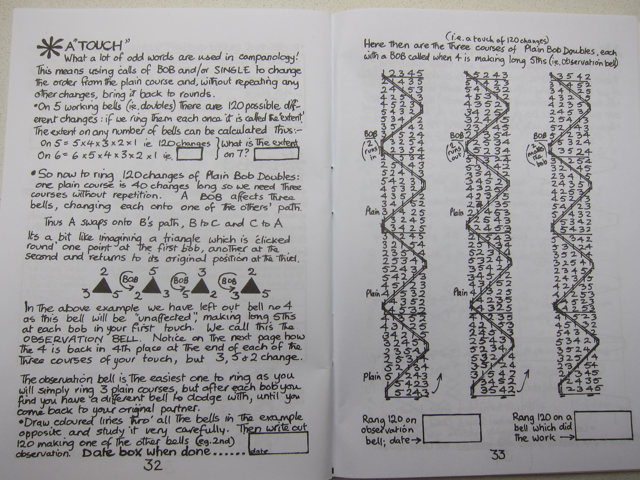
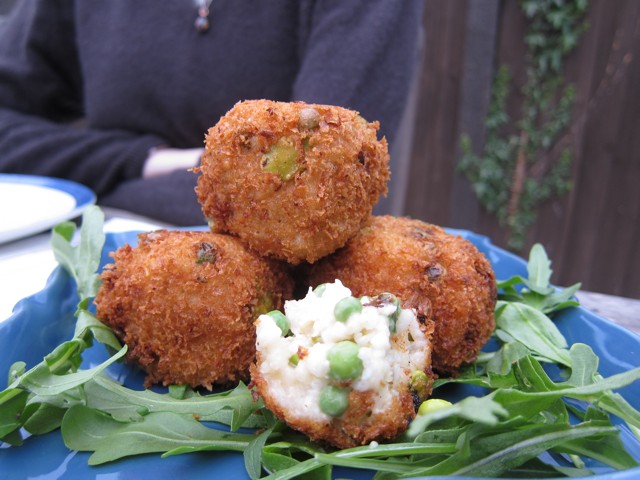
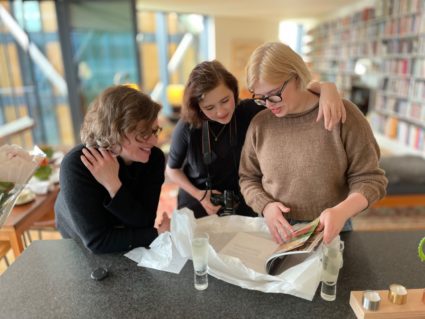
Your new home sounds better every time I hear about it, including your new neighbors and their garden. How wonderful for you! Maybe, if I’m lucky, I’ll get to see it for myself someday! And I always get so hungry when I read your recipes. Wish you were here to cook them for me!
you are just such an inspiration!!! I can’t wait to see you all in person!
You are SUCH an inspiration!!!
OH, Mom, I can’t wait to get you here either! But even sooner than that, I’ll be with you to cook whatever you like. Make a list!
Laurie, you inspire ME. September will be wonderful.
Love the green veg picture!
John
Me too!
Brava! The bell ringing, the bike riding, all of it.